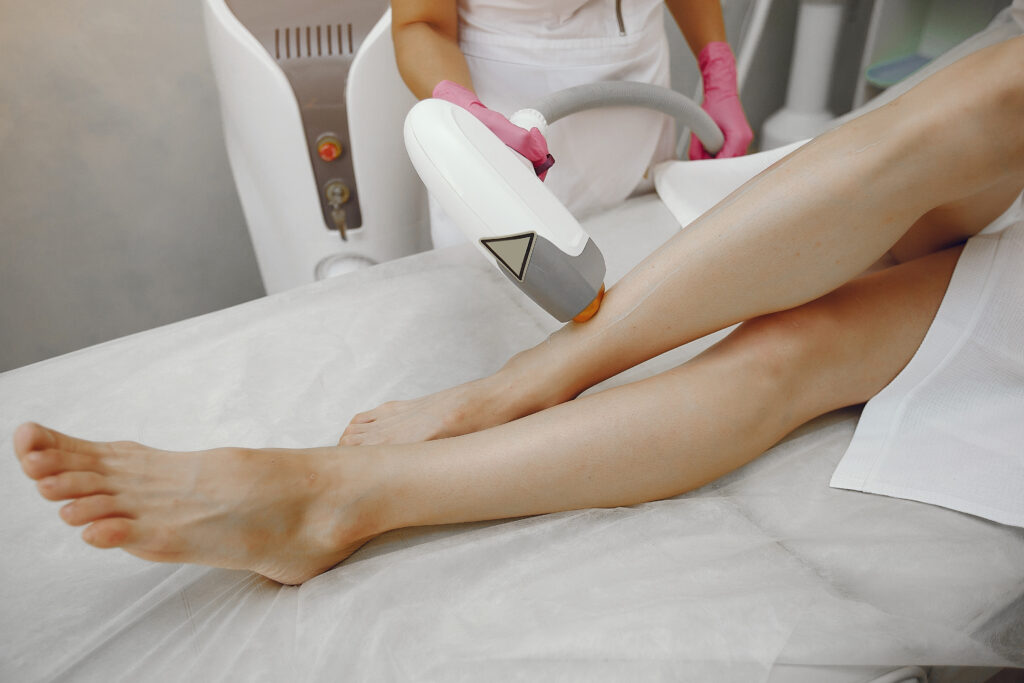Hair, Tattoos and scars programs
Hair removal is the process of removing unwanted hair. Common methods include shaving, waxing, depilatory cream and laser hair removal. Each method has its advantages and disadvantages, and it's important to choose the one that best suits your preferences and skin type.
Tattoo removal is the process of removing or diminishing an existing tattoo. Common methods include laser, dermabrasion and surgery. Laser tattoo removal is the most commonly used method, where the laser breaks up the tattoo pigments to allow your body to remove them naturally.
HAIR REMOVAL
The circumstances that may necessitate facial or body hair removal can vary from person to person. Some people may choose to wax for aesthetic reasons, while others may do so for medical reasons or personal preference. Hair removal may be considered in common circumstances such as:
- Aesthetics : Many people choose to wax for aesthetic reasons. This can include facial hair removal, such as eyebrows, upper lip, chin and cheeks. On the body, commonly waxed areas include legs, underarms, bikini line, back, chest and arms.
- Sports activities : Some athletes, particularly those involved in sports such as swimming, gymnastics or cycling, may choose to wax for practical reasons. Waxing can reduce resistance to water and air, improving performance.
- Medical conditions : In some cases, hair removal may be recommended for medical reasons. For example, people with polycystic ovary syndrome (PCOS) may have excessive facial and body hair, which can be managed by hair removal. In addition, some medical procedures may require prior hair removal to facilitate the procedure.

Tattoo removal
As for tattoo removal areas, this refers to the removal of existing tattoos. Areas where tattoos can be removed typically include the face, neck, arms, hands, legs, back, chest and feet. Tattoo removal methods can vary, including laser, dermabrasion or surgery, and their effectiveness can depend on the size, colors and depth of the tattoo.
It's important to note that hair removal and tattoo removal choices are personal and can vary according to individual preferences.
Lasers
Lasers are often used to remove excessive and unwanted hair, tattoos and scars. Lasers use pulsed light to selectively destroy hair follicles, tattoo pigments or scar tissue without damaging the surrounding skin.
For laser hair removal, the laser beam is directed at the area to be treated, where it is absorbed by the hair's melanin, heating the hair follicle and destroying it. Treated hair will gradually fall out in the weeks following treatment. The technique is effective in reducing unwanted hair growth, but may require several sessions to achieve optimal results. Common areas for laser hair removal include legs, underarms, bikini line, face and chest.
To remove tattoos, in the case of dark tattoos, lasers send out high-energy pulses of light to break up the tattoo pigments into small fragments, which are then eliminated by the body's immune system. The technique is most effective on darker tattoos, as darker pigments absorb the laser light better. The number of sessions required to remove a tattoo depends on several factors, such as the size, location and colors of the tattoo. It may be necessary to follow a specific care protocol after each treatment to avoid complications.
For scars, lasers can help reduce the appearance of scars by stimulating collagen production, eliminating scar tissue and reducing pigmentation. Lasers can be used to treat different types of scars, including acne scars, surgical scars and scars caused by injury. The number of sessions required depends on the size and severity of the scar, as well as each individual's response.
The benefits of lasers for removing unwanted hair, tattoos and scars include long-lasting, effective results, low pain and rapid recovery. However, it's important to note that lasers aren't suitable for everyone, and there are some potential risks associated with their use, including redness, burns, scarring and pigmentary changes.
Tell us about your needs
An expert will get back to you to discuss the various solutions.